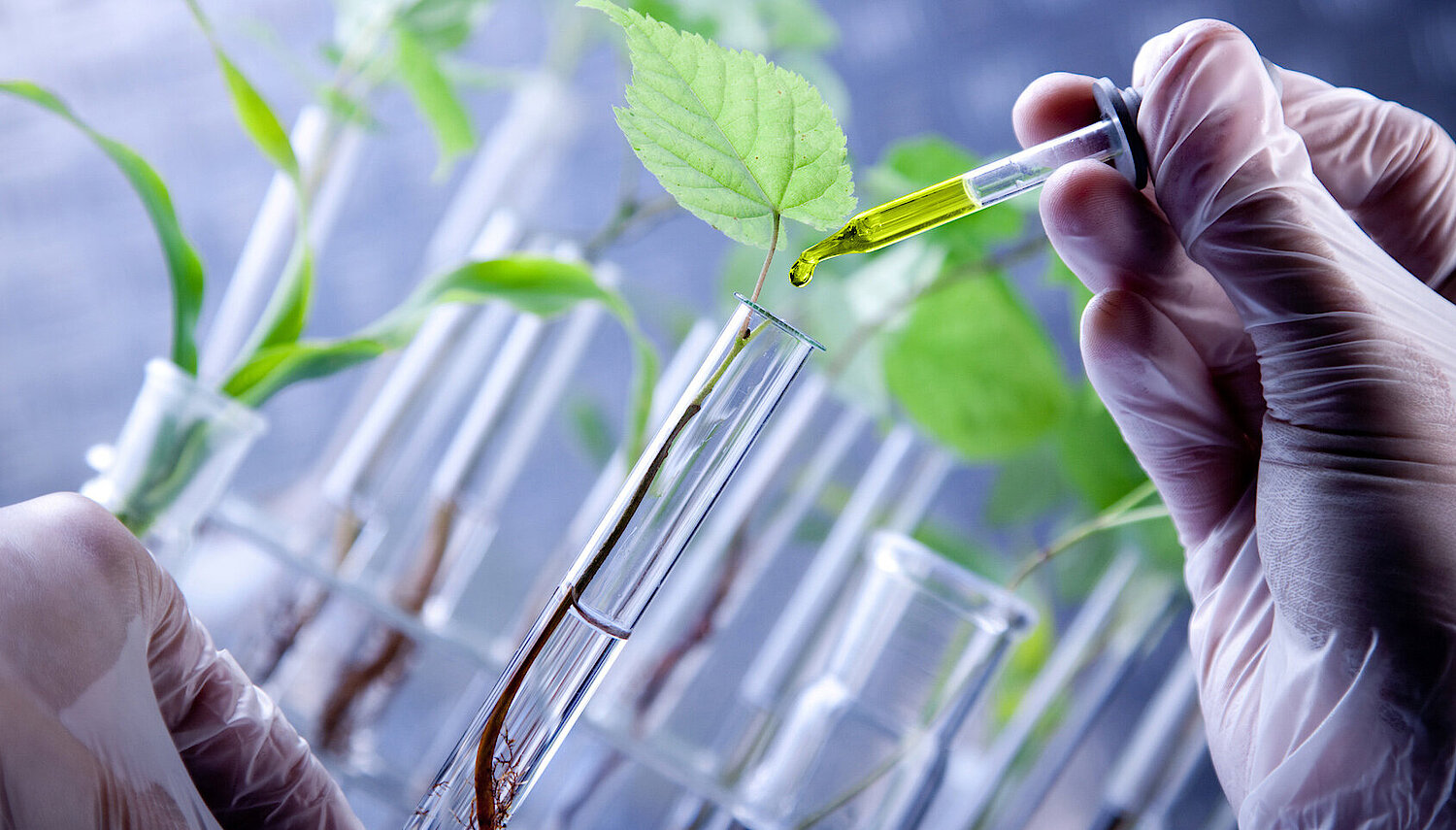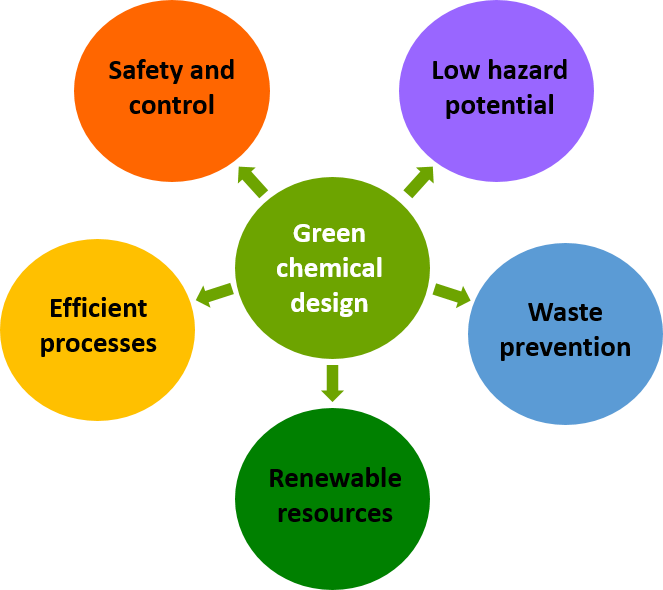Green Chemistry
The term ‘green chemistry’ is increasingly used in connection with sustainability. But what’s behind it? This site provides various definitions of the term ‘green chemistry’.

The term ‘green chemistry’
The goals of green chemistry are to be energy- and resource-efficient and to protect health and the environment.
Green chemistry can thus be viewed as a holistic approach that aims to integrate the concept of sustainability into chemical thinking and establish it in the chemical industry. The entire process, from the design and development of a new substance via its manufacture or production, processing and use through to recycling or disposal, must be taken into account.
In addition to the goal of acting sustainably to protect nature and people by thinking in new and innovative ways, businesses also gain new momentum by using alternative approaches, concepts and technologies.
Since the 1990s, the 12 Principles of Green Chemistry developed by John Warner and Paul Anastas have described this comprehensive, interdisciplinary approach:
| 1. Waste prevention |
| 2. Atom economy (avoiding by-products) |
| 3. Synthesis with less hazardous chemicals |
| 4. Design of benign chemicals |
| 5. Use of benign solvents and auxiliaries |
| 6. Design for energy efficiency |
| 7. Use of renewable feedstocks |
| 8. Avoidance of derivatives as intermediates in synthesis |
| 9. Use of catalysis |
| 10. Design for degradation |
| 11. Real-time analysis for pollution prevention |
12. Inherently Benign Chemistry for Accident Prevention |
These 12 principles can be assigned to five green chemistry criteria:
Green chemistry supports the following goals in particular:
- Achieving the UN’s Sustainable Development Goals (SDGs), especially SDG 12: “Sustainable Consumption and Production”;
- Implementing sustainable global chemicals management in line with SAICM (Strategic Approach to International Chemicals Management);
- Paving the way to the non-toxic environment laid down in the EU’s 7th Environment Action Programme;
- Moving towards the zero-pollution goal set out in the EU’s Green Deal;
- Advancing the EU’s circular economy strategy;
Implementing the Chemicals Strategy for Sustainability (CSS) proposed by the European Commission.

